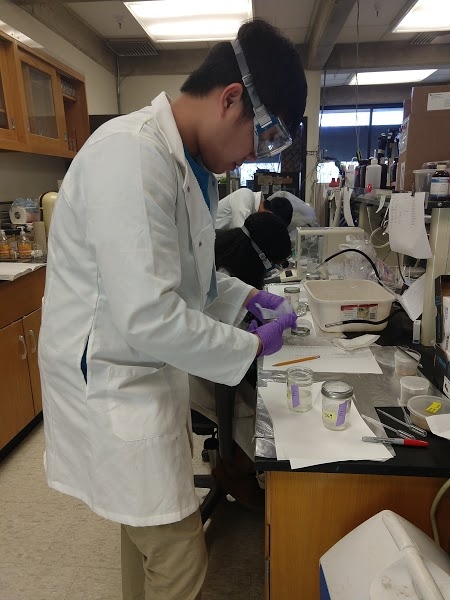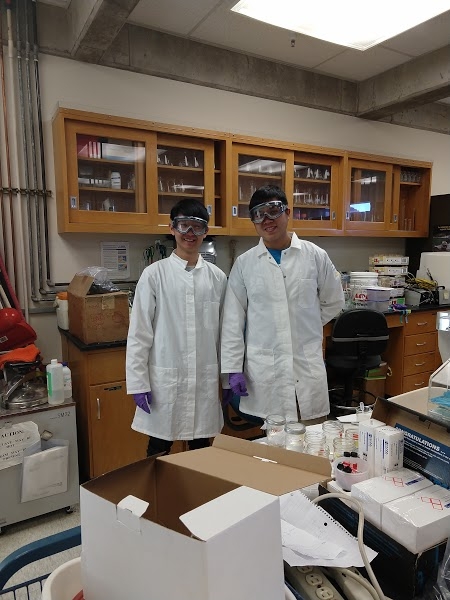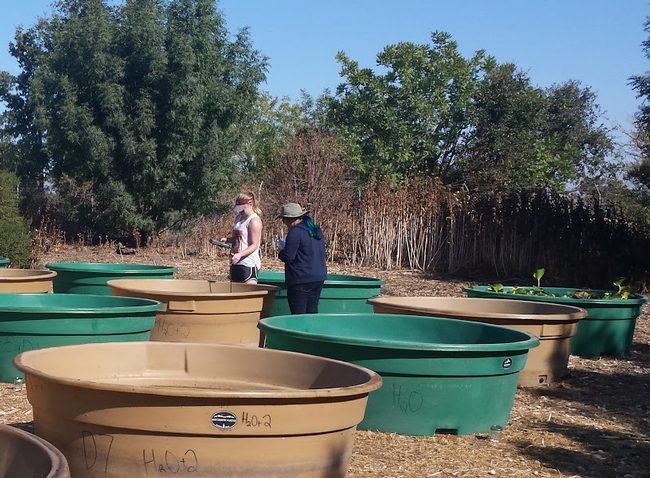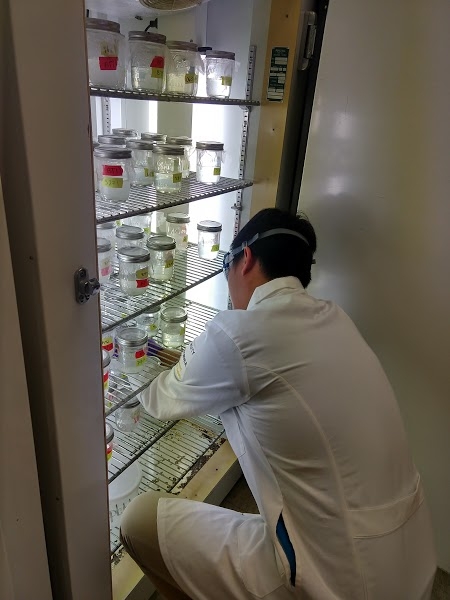One of the many advantages of being part of DRAAWP is the multiple occasions to meet and work with people from a variety of backgrounds. There have been many opportunities to interact with a variety of disciplines, from satellite imaging and economics to water chemistry and weed control. Thanks to this integrative approach, the Lawler Lab at UC Davis is uniquely situated in a position where it is able to provide a large diversity of undergraduate students the chance to try research first hand. This is particularly special, because this training is often their first exposure to scientific research, either in the lab or in the field. It has been a formative experience for many of the interns, right at the beginning their scientific careers.
One project which involved many undergraduate interns focused on the effect of invasive weed management via herbicides on larval mosquito habitats. This project entailed a large mesocosm assay, where several 350-gallon tanks were set-up with either water hyacinth (Eichnorrnia crassipes) or Brazilian waterweed (Egeria densa). Once the weeds and insect communities were established, an appropriate herbicide treatment was applied. Insect populations were closely monitored, with a particular focus on mosquitoes, for their role as a public health threat. Interns were involved at every level of this large experiment, from the set-up and maintenance of these large mesocosms, to the sampling effort and further identification of mosquitoes and other aquatic invertebrates.

Alice Liu has been part of the lab for four years. She is an Environmental Toxicology major and was first interested in the chemical exposure aspect of the project. Since then, she has developed a great talent in identifying insects, and has learned a lot about aquatic entomology and ecology. With no prior entomology background, she was nervous at first. “I was worried I'd be more of a hindrance than help,” Alice says. Boy, was she wrong! She had many roles throughout the project. She worked in the greenhouse to help care for the invasive weeds, and later helped in the field collecting samples and taking water quality measurements, putting her class-work to good use. As the project progressed, she learned how to identify insects to Order. With time, she became one of the top “insect identifiers”, able to key insects to genus level and even species level! With this skill set, and her funny yet patient personality, she was promoted to research assistant, where she was responsible for the training of new interns. She taught many of her fellow students how to ID insects, a task she thoroughly enjoyed. “I liked challenging myself by learning new insects, and I enjoyed helping others learn as well”.

Thanks to DRAAWP, many students have been exposed to applied scientific pursuits. It is an honor to be a part of these student's learning experiences, and help create the next generation of researchers. According to Hung, “I actually love working in a laboratory environment a lot. I also became more interested in doing research and I will pursue higher education in the field of entomology in the future”.

